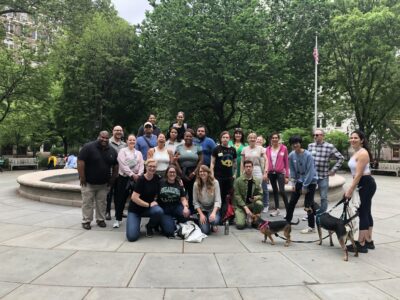“Oh, the board is not going to go for this,” I thought to myself as we prepared our 50-slide Q1 deck content.
The embedded perk was reasonably simple: Upon five years’ tenure with Roundtrip, an employee would be eligible for a one-month, paid sabbatical from their job, a complete respite from the incredible hustle branded as innovation. Sabbaticals are best known in the academic sense, though tech recently took a page out of those textbooks with Facebook, Google, Intel, Amazon, and others now incorporating such employment offerings.
The board did go for it, and my own lightly scheduled month away took place this past spring. It included a 200-mile bike trek honeymoon through southern France and practicing savoring from The Science of Well-Being, a Coursera adaptation of Yale University’s most popular on-campus class. Now that a few weeks have passed since my return, I offer five tips to other tech CEOs interested in rolling out a sabbatical program, plus bonus recommendations to those who dip out for their own.
Collectively, we can promote the physical and mental health within the communities and companies we endlessly seek to foster.
How to get leadership on board with sabbaticals
- First, develop the structure of the sabbatical program, plan who is eligible, and socialize the idea with the board.
For us, we benchmarked and concluded four weeks for five years’ tenure seemed most common yet seemed organizationally feasible given our size (around 50 employees). Knowing who is eligible in advance allows us to work with the individual to plan dates and coverage plans early.
We don’t set any expectations for how our employees will use their time, but we do encourage individuals to set them for themselves. My own plan was lightly agenda-ed. We include sabbatical preparations as part of our annual budgeting and quarterly forecasting processes. During our board dialogues, we even learned our lead investor, Motley Fool Ventures, offers a similar benefit.
- Second, communicate the plan.
We use Notion to track all of the internal details, allowing those within the company to understand the augmented responsibilities while seamlessly navigating stakeholders on the temporary shifts. Covering employees are empowered and encouraged to make decisions, even with imperfect information, to continue to advance our mission during an absence.
- Third, seek to achieve “zero inbox” status for the individual’s return.
There’s nothing worse than fearing time away because of a packed inbox awaiting your arrival. Our collective goal remains that the returning individual would have an actionless inbox comprised of carbon-copy messages intended to simply apprise.
- Fourth, promote it on social!
We want the world to know that the company will not fall apart, a recharge is good for the mind, body, and soul, and we celebrate the tenure milestone that accompanies the perk.
Sabbaticals are for (fully) detaching from work
Many Americans will not understand.
It’s hard to separate our lives — particularly when the line of work and social is often blurred. While away, I got everything from “Is everything OK?” to “Who is running the company?” to “Hey, did you see this hot industry update?” These of course all come from a good place! I fell into a trap of entertaining an ongoing dialogue into the sabbatical. About two weeks in, both my contact and I understood we were disrespecting the intent of the sabbatical. In hindsight, a simple acknowledgment of the conversation and an early-on commitment to revisit in a month would have solved.
Most importantly, upon return, thank those who took part in the coverage plans and their willingness to navigate an alternate course during the moments away. Ask individuals how they want to be appreciated for the support. Remember, their day will be around the corner!
Join the conversation!
Find news, events, jobs and people who share your interests on Technical.ly's open community Slack

Philly’s IT department fires long-tenured staff amid a high-level shakeup of priorities

Why is it so hard to find entry-level software engineering jobs?

This Week in Jobs: Get out there with 22 new job opportunities available to you!


